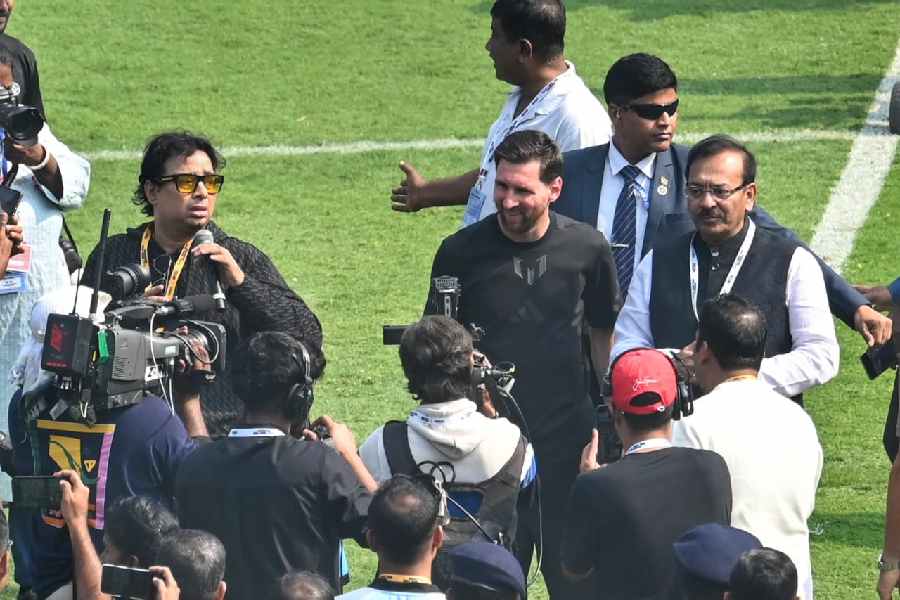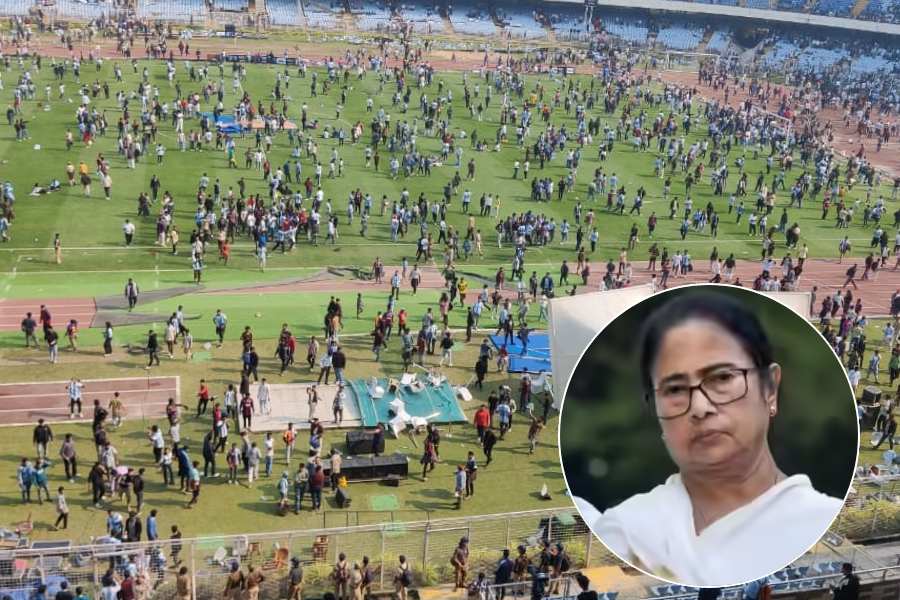 |
FREEDOM AND BEEF STEAKS: Colonial Calcutta Culture By Rosinka Chaudhuri, Orient BlackSwan, Rs 645
During the early 19th-century ‘Young Bengal’ period pioneered by Henry Derozio, liberation from superstitious tradition and beef-eating were interlinked as contrasts with social, political and religious orthodoxy, and underscored by personal acts of defiance against prevailing social mores. During this time, there was an extraordinary flowering of creativity: the first history of India in Bengali in 1808, and in 1831, the first play in English by an Indian who also wrote a 14-volume encyclopedia in Bengali. Rammohun Roy was the era’s outstanding exponent of the ‘true’ character of Hinduism. He and the Derozians were fiercely opposed by Hindu pundits, mainly in English debate and print, the latter signalling the arrival of modernity in colonial Bengal. Derozio’s circle comprised a budding intelligentsia that received organized English education and reflected the cosmopolitan quality of East India Company rule before the racism became institutionalized after the Sepoy Mutiny.
In her first four chapters, Rosinka Chaudhuri looks at modernity through the optic of the title that derives from a doggerel by Henry Parker, who lived in India from 1815 to 1842. Parker’s witty verse is the motif for an essay on Derozio’s onslaught on traditional practices and the linkage of meat-consumption with masculinity until Gandhi made vegetarianism fashionable — though Gandhi was himself initially taken by the beef and virility argument. Indians, both conservative and radical, were pressing for English education long before Macaulay’s Minute of 1835, and among Rammohun’s contributions were monotheist Hindu reform, campaigning against sati, the advocacy of Western education, and contesting the backwardness of society. Europeans, on the other hand, perceived Western-educated Indians, the majority of whom were Bengali Hindus, as passive and effeminate. The eating of beef was part of the Derozian agenda to mould a new, strong India, and became another cause of acrimony between modernists and traditionalists. Parker was very astute — it is unclear whether he was with Derozio or being sarcastic; he foresaw that if Indians were interfered with by missionaries bent on Christian conversion or governed directly by the London parliament, these would spell the end of the empire in India.
Derozio’s attempts to forge a national Indian identity were represented in English poetry. The Derozians condemned the excesses of Muslim rule in India, and were aped by conservatives and radicals alike. Chaudhuri correctly concludes there can be no retrospective characterization of a person like the liberal, anti-establishment Derozio as ‘communal’ or ‘secular’ — but she comes close nonetheless, using epithets like ‘prejudice’, though she concedes that Derozians were appreciative of Islamic culture. Curiously, considering Derozian iconoclasm towards Hinduism, an offshoot of this anti-Muslim sentiment, which echoed the British anti-Muslim attitude of that time, was the identification of the Indian with the Hindu. Derozio, who probably did not have a trace of Indian blood, gloried in the name of ‘East Indian’, and led the mixed-race community in the cultural and intellectual evolution of colonial Calcutta. Eurasians suffered hostility against their pretensions, which prompted their ripostes of the “impious doctrine which would make colour the test of intellect”: their liberal sentiments regarded racial equality as synonymous with being Indian. As early as 1831, there were grievances conveyed to the British parliament by the mixed-race community, though we are not told what these grievances were.
Derozio, writing in English, and Iswarchandra Gupta invoking the quotidian in Bengali, were at either end of the spectrum of modernity taking shape, with contradictions and conflicts between the traditional and the progressive. Iswar represented conservative opinion that contested the spread of Christianity, the Derozian European aesthetic and the Bengali modern. Antony ‘Firangi’ Hensman, poet and composer of Portuguese descent, stood on the middle ground, writing devotional songs with what today would be termed a ‘secular’ indigenous message. Besides literature, living spaces within homes were being modified to reflect the new modernity. Originally meant for European ladies to ‘withdraw’, the Hindustani reception area for cultural events was transformed as performance gave way to conversation and recreation. From initially imitating the colonial manner, the drawing room began to express national identity. Books, western furniture and fittings appeared in the room, though local usages remained, as places for children to study and servants to sleep. The ‘Tagore-style’ combining Bengali and European, and the indigenization of the furnishings and decorations, later became the vogue.
The last two chapters deal with literary criticism; the first concerning attacks by Buddhadeva Bose and Tagore on Madhusudan Dutt, who introduced blank verse, the sonnet and the modern epic to Bengali; and by T.S. Eliot on Milton, who initiated blank verse and the pause, such as the semi-colon, in English. The critiques were similar — that the verse was orotund, artificial and divorced from everyday usage. Both Tagore and Eliot subsequently recanted. The second essay condemns subaltern history’s attempt to enlist Tagore based on a misinterpretation of his intentions. Led by Ranajit Guha, subalterns wanted history as narrative concerned with the everyday world; it was to be written in literary and creative terms, rejecting “statist blinkers”. Tagore, however, had wished to free literature from any preoccupation with history and realism.
This book covers a history of events, as well as literary, religious, and social history, in a traditional society with a colonial overlay. In this complex age of ferment were the origins of modern India’s literary culture, and facilities we take for granted: trams, gaslight, electricity, trains, teashops, theatre, Bengali sweets, the museum and the public library. The meaning of words change: poet, literature, celebrity, history, caste, drawing room. Chaudhuri doffs her metaphorical cap needlessly to various authorities, and there are avoidable repetitions owing to the use of the same sources. She repeats the words “Oriental’ or “Orientalism” 10 times in one section, evidently in acknowledgment to the now discredited Edward Said. All the chapters were originally presented to learned societies and this text will challenge the general reader. Nevertheless, this is a charming work, and a guide and inspiration for more narratives on the most exhilarating period in India’s one-time capital city.










